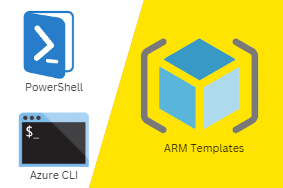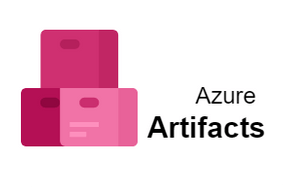Google Cloud Computing can help your business in so many ways; from operational efficiency to scalability to processing power and storage, the possibilities are endless. But how does it work? How can it improve your business? And where do you begin? Here, we explain everything you need to know about Google Cloud Computing, including what it actually is, and the ways in which it can help you improve your business.
What Is Google Cloud Platform?
One of Google’s most-recognized products is its search engine, which allows people all over the world to find information. But there are many other services offered by Google that you may not know about, including Google Cloud Platform (GCP). What is GCP? GCP was originally designed for developers building on top of and using Google’s infrastructure services. Today, however, it has expanded into one of Google’s fastest growing businesses. What Is Google Cloud Hosting?: A large part of what makes GCP so special is their ability to help companies with hosting and cloud storage solutions. By using their infrastructure solutions, companies are able to utilize resources at a lower cost than they would otherwise have been able to achieve alone. It also helps ensure continuity should any part of your company fail or experience issues in service. How Does Google Offer These Services?: While a lot of consumers have likely never even heard of these services before, those who have likely do so without even realizing it. If you use anything related to Gmail, any number of Android devices or iPhones with Google Maps installed, chances are good that you’ve utilized some kind service offered through GCP already! All of those apps actually run on Google’s servers, something that you probably didn’t realize when signing up and downloading them. Bottom Line: There are multiple reasons why anyone might want to consider GCP as an option. Companies can save money while increasing overall efficiency, security, privacy and accessibility. However, these services require a certain level of expertise when managing them; if you don’t have that expertise yourself already or if don’t trust another person’s management skills, then perhaps working with an expert would be better suited for your situation than setting out on your own entirely.
What Are The Main Features of GCP?
The service provides dozens of compute-based products, and we’ll focus on two main offerings: Compute Engine, which is a scalable infrastructure-as-service offering that lets you run virtual machines (VMs) and containers; and Container Engine, which allows users to deploy container clusters. The above gives users flexibility in terms of how they want their applications deployed. If you’re working with a cloud-native approach or application orchestration tools such as Kubernetes or Apache Mesos, using GCP can be an easy way to get going with managing those workloads. There are several other features in GCP including DataProc, Trusted Execution Environment VMs, Pub/Sub messaging services and load balancing services but it’s not enough space here to cover them all! To learn more about each product offered by GCP check out its online documentation for all of your reference needs.
How Does GCP Compare To AWS and Azure?
GCP is less developed than AWS and Azure, but it’s quickly catching up. That said, GCP and AWS are similar in that they’re both leading cloud computing platforms with many enterprise-level solutions. GCP tends to offer more flexible pricing models, while AWS has more solutions specifically for larger companies. In other words, you probably wouldn’t use GCP for big data processing or server virtualization but you might use it for security solutions or storage and network management software—it all depends on your needs. On top of that, GCP can integrate seamlessly with a lot of third-party systems, including external apps and information providers (just like most competitors). These third parties connect to GCP using cloud connectors which streamline access between services. To learn more about how Google Cloud compares to competitors Microsoft Azure and Amazon Web Services (AWS), check out our feature here . Lastly, if you want even deeper analysis into each service’s pros/cons check out our full reviews: Linkedin here , AWS here , Microsoft Azure here .
What Should I Consider Before Choosing Between AWS, Azure And GCP?
Comparing AWS, Azure and GCP is more complicated than you might think. There are a lot of features within each service and an entire ecosystem surrounding them. This can be overwhelming if you’re trying to determine which one is best for your needs, so we’ve broken down everything you need to know before choosing between AWS, Azure and GCP in order to simplify your decision-making process. We’ll walk through key considerations including pricing, supported services and programming languages, as well as address any concerns potential users may have when deciding which cloud platform to select. A last word of advice – make sure that whichever option you choose, it matches up with your IT team’s experience and expertise.
How Do I Use These Solutions?
There are several types of cloud computing, including infrastructure as a service (IaaS), platform as a service (PaaS), and software as a service (SaaS). Most people are familiar with SaaS, since it is so prevalent in today’s world. SaaS allows users to access applications via their internet browser, and it differs from traditional application software because it usually provides software-as-service. This cloud computing is easy for business owners because they no longer have to worry about storing and securing data on their own servers. Plus, if updates or changes need to be made, employees simply log into an account and can make any alterations immediately. Businesses can also gain back valuable employee time that was previously spent working on IT issues. Since IaaS offers control over your virtual machines (VMs) through private clouds or public clouds, you only pay for what you use when you use it. In other words, you won’t spend more money than necessary on your server resources like storage or power overages when demand peaks—you’ll only pay per usage.[1] PaaS offers organizations a range of tools needed to develop web apps without having to install complex layers of technology. With PaaS, developers don’t have to deal with things like databases, operating systems, load balancers or networks. The end result is that companies using PaaS experience reduced costs due to a shorter development cycle and improved scalability. [2] Security has been one of the main concerns regarding cloud computing but recent studies show there aren’t really any risks compared to running your own equipment; after all, information stored remotely isn’t susceptible to common cyber security threats such as hacking. As long as you choose a trusted provider and practice safe Internet practices by not sharing sensitive passwords or uploading sensitive information, cloud computing is actually safer than using your own hardware. On top of those benefits, most of today’s providers offer some form of recovery plan to ensure your data remains secure.[3] So how do small businesses take advantage? Luckily, most solutions offered by major vendors are relatively easy to set up and typically come with step-by-step guides created by experts. Plus, there are many online learning modules available at no cost that will teach business owners everything they need to know before jumping in head first. If you’d prefer to get help directly from a vendor, you can contact them and usually receive assistance right away. To prepare your business before launch, here are a few questions to ask yourself: Do you want complete control of your VMs or are you fine with relying on third party administrators? What type of workloads does your business require? Do you currently work with a cloud partner or could you stand to save some money by switching to another provider? How much downtime can your organization tolerate between server maintenance windows? What kind of customer support do you need during off hours and holidays, particularly if your company runs 24/7 support centers or customer support teams overseas? [4] Whichever path you choose, follow these steps when getting started: Step 1: Define Your Requirements. What you need from your cloud computing solution largely depends on your industry and business goals. Take some time to reflect on current challenges and brainstorm new opportunities by using scenarios as a guide for thinking creatively. You might find that SaaS is enough to meet your needs or maybe PaaS would help streamline operations further. Regardless of which avenue you choose, defining parameters early will eliminate confusion in future stages of your project. Step 2: Research Your Options & Pick a Vendor.



0 Comments